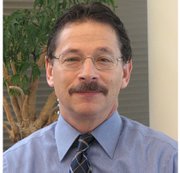An exciting new medical breakthrough could forever change the lives of individuals with sickle cell disease (SCD). Researchers at UCLA’s Broad Stem Cell Research Center have successfully established the foundation for using Hematopoietic Stem Cells (HSC) from the bone marrow of patients with SCD to treat the disease.
Courtesy photo
Dr. Donald Kohn
Dr. Donald Kohn, a professor in the Departments of Microbiology, Immunology & Molecular Genetics (M.I.M.G.) and Pediatrics at UCLA, led the study. Dr. Kohn introduced an anti-sickling gene into the HSC to capitalize on the self-renewing potential of stem cells and create a continual source of healthy red blood cells that do not sickle. The breakthrough gene therapy technique is scheduled to begin clinical trials by early 2014.
“What we did in the study was to get small samples of bone marrow from 25 people with sickle cell over a three-year period,” said Dr. Kohn. “We were able to purify the bone marrow. If this works, the advantage is that every patient could be their own donor and a perfect match for themselves. We are very excited. It has worked better than we had hoped. It looks very promising.”
He added, “It’s proof of principle in the laboratory, but we are also aware of the fact that what works in the laboratory may not work with patients.”
Dr. Kohn’s research focuses on the development of new methods to treat genetic diseases of blood cells, cancer, and leukemia by gene modification of HSC. Dr. Kohn’s gene therapy approach using HSC from a patient’s own blood is a revolutionary alternative to current SCD treatments as it creates a self-renewing normal blood cell by inserting a gene that has anti-sickling properties into HSC.
This approach also does not rely on the identification of a matched donor, thus avoiding the risk of rejection of donor cells. The anti-sickling HSC will be transplanted back into the patient’s bone marrow and multiplies the corrected cells that make red blood cells without sickling.
“Many of the sickle cell patients are excited about the possibility of the new treatment as opposed to transplant from one person to another,” said Dr. Kohn. “Only 15 percent of people with sickle cell have a brother or sister who are healthy, and a perfect match. Obviously sickle cell is still a miserable disease, but this treatment brings new hope.”
SCD affects more than 90,000 patients in the U.S., with the disease disproportionately impacting African Americans and Hispanic Americans. It is caused by an inherited mutation in the beta-globin gene that makes red blood cells change from their normal shape, which is round and pliable (like a plastic bag filled with corn oil), into a rigid sickle-shaped cell (like a corn flake).
Normal red blood cells are able to pass easily through the tiniest blood vessels, called capillaries, carrying oxygen to organs such as the lungs, liver and kidneys. However, due to their rigid structure, sickled blood cells get stuck in the capillaries and deprive the organs of oxygen, which causes organ dysfunction and failure.
Current treatments include transplanting patients with donor HSC, which is a potential cure for SCD, but due to the serious risks of rejection, only a small number of patients have undergone this procedure and it is usually restricted to children with severe symptoms.
“This treatment could essentially eliminate the sickle cell of people who have had transplants,” said Dr. Kohn. “There are 90,000 in U.S. with sickle cell disease, and only about 500 have had transplants. However, many whose transplants were successful had improvement in their health.”
The study was supported in part by a Disease Team I Award from the California Institute for Regenerative Medicine, the state’s stem cell research agency created by voter initiative in 2004. Other support came from the UCLA Broad Stem Cell Research Center and Jonsson Comprehensive Cancer Center and the Ruth L. Kirschstein National Research Service Award.
The stem cell center was launched in 2005 with a UCLA commitment of $20 million over five years. The success of this technique will allow Dr. Kohn to begin clinical trials in patients with SCD by early next year.
“The next step will be to do a small-scale clinical trial in which we would transplant patients with sickle cell with their own bone marrow we have modified in this way,” said Dr. Kohn. “We hope to open up a trial a year from now. We first have to get approval from FDA, but that’s the goal.”
To learn more, visit thttp://www.stemcell.ucla.edu.

